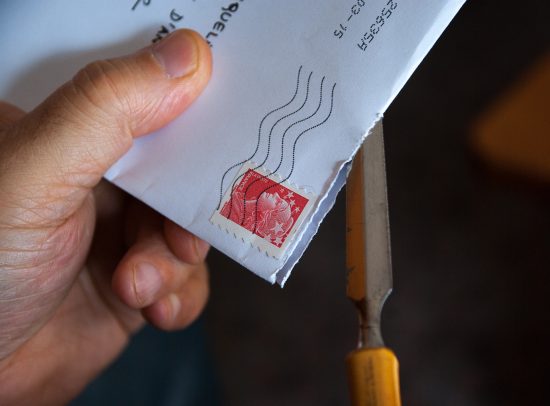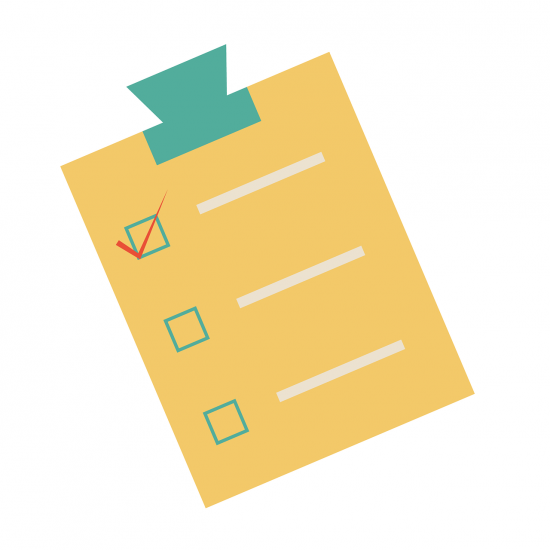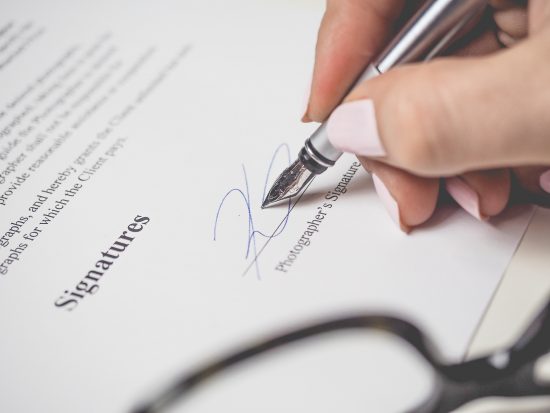
That’s a common observation heard from grandmothers worldwide. And while it’s undeniable that letters have given way to voice mails, emails, and text messages, one remains crucial for those of us who run our own businesses:
Proposal letters.
Most of us spend the vast majority of our time writing the proposals themselves. But in some situations we need to do a bit more. A brief cover letter introducing the proposal is expected by some potential clients, and appreciated by many.
Unfortunately, it’s tempting to just throw this cover letter together in a hurry. We spend painstaking hours getting the proposal just right… but end up neglecting a great opportunity to forge an immediate connection with a potential client.
Let’s get into what proposal letters are, when you should use them, and how to make them as simple and effective as possible!
What Are They?
The term “proposal letter” actually has multiple meanings. It can be a bit confusing to get your head around the concept without knowing which interpretation people are referring to.
Here are the two most common versions:
- A brief cover letter that serves as a formal introduction to a potential client. This letter shows the reader you understand their needs, highlights a few key differentiators why you’re the best choice to meet them, and hopefully intrigues the reader enough to read your full proposal.
- A letter that acts as the proposal itself. You’ll see these most often with small projects and more informal clients.
I’m focusing on the first interpretation today. These letters are meant to accompany a standard proposal – like the ones we give away in our proposal template library and can quickly be created with proposal software, Bidsketch.
A proposal letter isn’t just a summary of your full proposal. It’s a persuasive introductory document meant to intrigue a reader enough to find out more.
How About Some Examples?
The easiest way to understand how writing a proposal letter works is to see a few of them in action.
Here’s a proposal letter example from consultant and proposal expert Tom Sant’s book Persuasive Business Proposals:
Dear Mr. Taylor:
The enclosed proposal responds to your request for audits of the following facilities:
• the Patriot Center for Rehabilitative Medicine in San Luis Obispo, California
• the Phoenix City Hospital in Phoenix, Arizona
• the Moreno Valley Wellness Center in Sunnymead, California
• the Playa Vista Health Care Center in Los Angeles, California
Our proposal addresses your need for thorough audits of all four operations, but we have also gone a step further, taking into account your broader objectives. We have developed an overall plan to help you gather the necessary data to turn the properties around financially and protect the value of your investment. We have also outlined our services in the event that one or more of these properties cannot be made profitable and must be sold or liquidated.
We recommend handling the audits by means of a partnership between ourselves, through our headquarters in Los Angeles, California, where we have extensive experience in real estate audits, and James J. Harrison, CPA, & Company, a firm with offices in Phoenix, Arizona, with recognized expertise in supporting the health care industry. This partnership is uniquely qualified to handle the audit and provide additional services as may be required.
We bring some distinct advantages to the process of handling your audit:
- As medium-size firms, we have the flexibility and responsiveness to meet all deadlines, especially those imposed by third parties and regulators. We offer you the level of service and commitment that the national firms save for their largest clients.
- At the same time, we have the resources, specialized knowledge, and experience to handle complex audits of long-term care facilities quickly.
- Senior partners of both firms will be personally involved in conducting your audits.
- We provide the highest-quality services at a cost-effective price.
We seek to handle all four audits because it is important to develop a total picture of the financial situation for all four facilities. In addition, by handling all four audits, we can save you money. For these reasons, our firms would decline to participate in a split or partial award.
We are eager to work with you on this project. May we schedule a time to present our proposal to the entire management team?
Sincerely,
Donald Miller, CPA
Here’s another from Alan Weiss’s excellent book Million Dollar Consulting Proposals:
Wile E. Coyote
Vice President, Predation
Acme Co., Inc.
85 Canyon Dr.
Notsocarefree, AZ 88901
Dear Wile,
As promised, I’ve enclosed two copies of the proposal reflecting our agreements reached yesterday in your office. I’ve forwarded an electronic version as well this morning.
Please choose the option you prefer, the payment terms you prefer, and return one of the copies I’ve already signed via the FedEx envelope enclosed. I’ve also enclosed an invoice in different varieties in case this helps in the process.
I’m prepared to begin within a week of your acceptance, as discussed.
Please note that this proposal is copyrighted and contains my intellectual property. It may not be shared with anyone outside of your organization for any reason without my express approval.
I’ll call you Friday at 10 a.m. as agreed, if I don’t hear from you prior, to see which choices you’ve made. If you’d like to begin immediately with a telephone “handshake,” I’m happy to accommodate you.
Thanks for the opportunity to work with you on this important project.
Sincerely,
Alan Weiss, PhD
Finally, here’s one more proposal letter from Kurzweil Education Systems. Although the context is different (requesting a grant) the objectives are identical:
Dear Ms. Atwater,
Orchard Middle School is pleased to present this proposal for your review. We look forward to partnering with you to provide a reading intervention program for our students with poor reading skills called Read to Succeed! Orchard Middle School has over 50 at risk students with a reading performance of at least two years behind their current grade level. The objective of the Read to Succeed! program is to help all students with poor reading skills learn to read at grade level and increase their reading speed, comprehension, and reading attention span.
During the last year, we have been piloting the Read to Succeed! program with a small group of students with poor reading skills and have seen dramatic improvements with most of the students increasing their reading ability by one to two grade levels. The Read to Succeed! program provides students with access to assistive reading systems, along with training for classroom teachers and reading specialists.
We have seen measurable success and we are now seeking to expand our Read to Succeed! program to address the needs of all the at risk students in the Orchard Middle School. Our proposal requests $16,504 in funding to obtain the software, hardware, and training necessary to equip the Orchard Middle School resource room with five assistive reading systems, each including a computer, scanner and assistive reading software.
We appreciate ABC Foundation taking an interest in helping our students develop their reading skills through our new reading program! Please give me a call at 703-555-1212 x342 if you require any further information or have any questions concerning this proposal.
Thank you,
Jennifer Hazelton
Special Education Coordinator
When Do You Use Proposal Letters?
Image credit: jackmac34
You don’t need proposal letters for every project you try to land. A lot depends on the scope of the project and the nature of the client.
A large corporate client with an extensive project is much more likely to expect a proposal letter than a smaller project from a new startup.
Larger corporate clients are accustomed to seeing cover letters on their intra-office communications and memos, as there’s more red tape and a well-defined corporate hierarchy. The whole process is a bit more formal.
You don’t need proposal letters for smaller jobs, though you could include one if you want to. As you’ll see in just a second, they don’t take too long and, when done right, can be persuasive sales documents. They can also add a nice personal touch.
Some businesses skip a cover letter and opt for a personalized thank-you letter at the end of their proposals instead. This is pretty uncommon, but a good way to show the client you appreciate the opportunity with a nice personal touch.
Executive Summary vs. Proposals vs. Proposal Letters
Image credit: shauking
If you’re familiar with submitting proposals for larger projects and clients, you might be wondering what distinguishes a proposal letter from an executive summary. How does everything fit together?
The biggest difference between here lies in the purpose. With full proposals, the goal is simple: convey the key information needed to convince a client to choose you for the gig.
An executive summary is essentially a condensed, less detailed version of that proposal. The idea is to be able to have a busy upper manager quickly scan it and get the reassurance they need to pass it along to their subordinates, who will review the proposal in detail.
We’ll actually have an entire post about executive summaries out shortly, so stay tuned!
A proposal letter, on the other hand, is meant to introduce yourself, quickly show the client you understand their needs, and briefly mention a few things that make you the ideal choice. The aim is to make a good impression. There’s no need to hard sell or get into the gritty details. All you have to do is intrigue the reader enough to turn to the full proposal.
These documents also have different lengths. While truly massive projects (with defense contractors, Fortune 500 companies, etc.) might have proposals that run hundreds of pages, our research of over 25,000 proposals found that around five is ideal.
That’s a good baseline for small to mid-range projects. An executive summary, which you only really need on large projects, is a fraction of the full proposal. A few pages is ideal. The proposal letter should be even shorter – no longer than one page for best results.
Structurally, these documents are actually extremely similar. The difference lies in the level of detail. As you’ll see below, the proposal letter tracks along nicely with the full proposal (identify the client’s need, recommend the solution, introduce benefits, and give them a simple way to act).
This structure makes all of your documents persuasive. Follow it, and you can appeal to people no matter how much (or little) of your proposal package they read.
How to Write a Proposal Letter in 5 Simple Steps
Image credit: asi24
Just as every client is unique, so is every proposal letter.
With that said, you can save yourself a mountain of trouble by embracing a persuasive structure that works well for every situation. Once you grasp the key elements and how to order them, it’s a matter of filling in the blanks to adapt each letter to the client.
Tom Sant breaks how to write an effective proposal letter in five simple steps:
Step 1. Identify the Client’s Key Business Need(s)
A strong proposal letter starts on a topic the potential client is already thinking about: their business needs. What is the challenge that’s keeping them up at night? What are they worried about? Why are they requesting proposals in the first place?
If you lead with that information, it feels like you’re joining in on the conversation they’re already having in their head. There isn’t a better way to make a potential client feel understood.
This is more than just regurgitating project specs from the RFP. Someone might want a new website design, for instance, but that’s only the surface-level requirement.
Not having a shiny new website isn’t causing anyone to lose sleep. But a gradual reduction in their customer base or loss of market share – the deeper business implications – certainly could.
You might have to do a little digging to spot the business pain point beneath the surface-level project. But if you do that and share it with the client, you’ll instantly distinguish yourself from the competitors who just reiterate project specs without deeper thought.
A good needs statement paragraph might look something like this:
The enclosed proposal responds to your request to re-design your website. We understand you would like to consolidate multiple websites after your merger with Acme company. The challenge lies in uniting two distinct customer bases, while getting them accustomed to the new brand and reassuring them the quality of their service won’t decrease.
Step 2. Recommend a Solution to Meet Those Needs
Once you identify the client’s pain points, it’s time to outline your recommended solution.
Use this paragraph to give the reader a broad overview of the favorable outcome(s) they’re looking for. Again, these outcomes cut beneath the surface-level requirements as expressed in the RFP.
No one will pay serious cash just for a cool new website; they pay because they want what that new website can offer their business (more customers, sales, brand recognition, etc.)
Leave the gritty details for your full proposal, but use this paragraph to identify the solution and connect it to tangible business benefits.
A good solution paragraph might look like this:
We recommend a revitalized digital presence that leverages the strengths of both websites under a single banner. Our proposal includes a plan to launch the new brand within nine months. This plan includes a mobile-responsive website, an updated e-commerce store, and a community forum where customers can receive technical support.
Step 3. Explain Your Basic Approach
After you’ve described what your solution looks like, take a minute to explain how you’ll put it into place. Remember, proposal letters are most useful for large, complicated projects. There are a lot of moving pieces; it’s a good idea to give clients an idea of how things will proceed.
Your recommended solution probably consists of a suite of services that, when performed all together, achieve the solution. Use this paragraph to highlight the major services involved and describe what will happen when.
A good example might look like this:
Our process begins with a kick-off meeting between our strategists and key digital marketing stakeholders from your team. After settling on a vision for the re-design, we will design several wireframe versions for you to choose from. We will incorporate your feedback from weekly phone meetings as we finalize the winning design.
Step 4. Mention A Few of Your Most Important Differentiators
Why should the client hire you instead of anyone else?
Understanding their needs and recommending the right solution gets you pretty far, but it’s the unique value you bring to the project that really seals the deal.
Your full proposal will lay this out in detail. Use the proposal letter to highlight just a few of the most important factors that make you the perfect choice for the job.
Because this tends to be a longer paragraph, you can break up each factor with bullet points to make things easier to read.
Continuing on with the web design example, a good example might look like this:
We bring some distinct advantages to the process of handling your re-design:
- Our process is unique in that our marketing specialists work closely with our designers throughout. This ensures the new website is beautiful, functional, and a powerful tool to generate business.
- Our consultants have extensive experience in the communications industry and re-designed the Beta company website after their merger with Delta company.
- We our also located in Los Angeles, which allows our senior consultants to work closely with your team and provide ongoing support after launch.
Step 5. Finish with a Call to Action
Imagine this situation. A busy, overwhelmed executive who works for your dream client reads your proposal letter and loves it. He or she makes a mental note to follow up later, but an urgent call comes in and your proposal is set aside.
“Later” never comes; an interested prospect forgets about you because you get lost in the shuffle!
Including a short call to action helps avoid these situations. Give your reader a straightforward action to take if they’d like to proceed. Better yet: give them that option and a heads up about how and when you will follow up too.
Here’s an example of a good call to action:
After you have reviewed the enclosed proposal, sign the contract electronically if you’d like to proceed as is. I will call you on Friday to discuss any questions you might have.
See how that works? Even if the interested prospect forgets to follow up, taking matters into your own hands gives you another chance to land the gig.
To recap the process from start to finish:
- Introduce yourself by identifying key client needs
- Recommend a solution to address them
- Explain your basic process
- Mention a few key differentiators
- Conclude with next steps/call to action
- (Edit and proofread)
A Few Tips to Make Your Proposal Letters Even More Effective
Image credit: StockSnap
If you follow the framework above, you can get noticed and intrigue a reader enough to find out more. All within a span of just a single page.
A big caveat: if the client wants something different, their guidelines trump all. If they specify which information to include or omit within a proposal letter, follow their guidelines diligently. How can you expect to convince them you understand their needs if you can’t even follow basic instructions?
One thing you might have noticed that’s missing: cost. In almost every situation, putting a dollar amount in your proposal letter is a mistake. That just gives busy executives – people who haven’t had time to read your proposal and fully understand the value you can deliver – an easy excuse to reject you.
If they spot a high figure on page one, your package might end up in the trash bin before you get a fair shot. The only exception would be if the client specifically asks for it. Or if a bargain price is your competitive advantage.
Don’t overlook formatting. The words you use and how they’re structured are key. But presentation is equally important. A letter submitted with a company header and stationary conveys professionalism. And make sure to formally address the recipient. This website has a great example of a business letter format.
Finally, remember your goal. Keep your proposal letter short and focused on the client. Resist the temptation to go on and on about yourself, qualifications, or experience. Forget about selling the client on hiring you after reading the letter alone. The pressure is much lower than that. Just get them to the next page.
Make an Unforgettable First Impression
Writing a proposal letter can sound like a drag. Especially after you slog through a proposal and think you had already finished.
But it doesn’t have to be. If you follow the simple framework above, you’ll make an unforgettable impression on larger clients with extensive (and lucrative) projects. Don’t miss this opportunity to stand out from the pack.
Do you use proposal letters? Have you noticed an impact they’ve had on landing clients? Leave a comment below and let me know!





